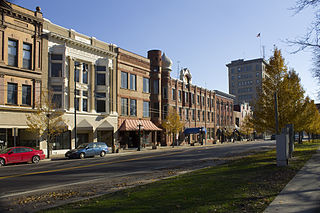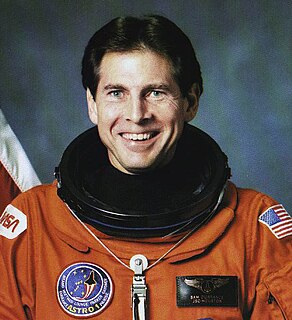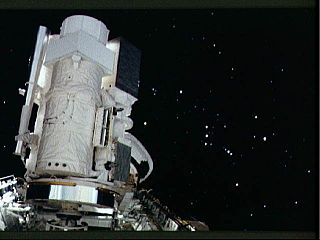| Ronald Anthony Parise | |
|---|---|
 | |
| CSC Payload Specialist | |
| Nationality | American |
| Born | May 24, 1951 Warren, Ohio |
| Died | May 9, 2008 (aged 56) Silver Spring, Maryland |
Other occupation | Scientist |
Time in space | 25d 14h 13m |
| Missions | STS-35, STS-67 |
Mission insignia | |
Ronald Anthony Parise (May 24, 1951 – May 9, 2008) was an Italian American scientist who flew aboard two NASA Space Shuttle missions as a payload specialist.

The Space Shuttle was a partially reusable low Earth orbital spacecraft system operated by the U.S. National Aeronautics and Space Administration (NASA) as part of the Space Shuttle program. Its official program name was Space Transportation System (STS), taken from a 1969 plan for a system of reusable spacecraft of which it was the only item funded for development. The first of four orbital test flights occurred in 1981, leading to operational flights beginning in 1982. In addition to the prototype whose completion was cancelled, five complete Shuttle systems were built and used on a total of 135 missions from 1981 to 2011, launched from the Kennedy Space Center (KSC) in Florida. Operational missions launched numerous satellites, interplanetary probes, and the Hubble Space Telescope (HST); conducted science experiments in orbit; and participated in construction and servicing of the International Space Station. The Shuttle fleet's total mission time was 1322 days, 19 hours, 21 minutes and 23 seconds.
A payload specialist (PS) is an individual selected and trained by commercial or research organizations for flights of a specific payload on a NASA Space Shuttle mission. People assigned as payload specialists included individuals selected by the research community, a company or consortium flying a commercial payload aboard the spacecraft, and non-NASA astronauts designated by international partners.
Contents
Parise was born in Warren, Ohio to Henry and Catherine Parise. By age 11, he became a licensed amateur radio operator. In his teens, he developed an interest in astronomy and aviation and became a pilot. [1] He attended Western Reserve High School, graduating in 1969 before attending Youngstown State University. In 1973, he obtained a bachelor of science degree in physics, with minors in mathematics, astronomy, and geology. He went on to receive a master's degree in 1977 and a doctorate in 1979 from the University of Florida, both in astronomy. He and his wife Cecelia Sokol Parise had two children.

Warren is a city in and the county seat of Trumbull County, Ohio, United States. The municipality is located in northeastern Ohio, approximately 14 miles (23 km) northwest of Youngstown and 15 miles (24 km) west of the Pennsylvania border.

Amateur radio, also known as ham radio, describes the use of radio frequency spectrum for purposes of non-commercial exchange of messages, wireless experimentation, self-training, private recreation, radiosport, contesting, and emergency communication. The term "amateur" is used to specify "a duly authorised person interested in radioelectric practice with a purely personal aim and without pecuniary interest;" and to differentiate it from commercial broadcasting, public safety, or professional two-way radio services.

Western Reserve High School is a public high school in Berlin Center, Ohio, United States. It is the only high school in the Western Reserve Local School District. Athletic teams compete as the Western Reserve Blue Devils in the Ohio High School Athletic Association as a member of the Mahoning Valley Athletic Conference.
Parise died from a brain tumor on May 9, 2008 at the age of 56. [2] [3]

A brain tumor occurs when abnormal cells form within the brain. There are two main types of tumors: malignant or cancerous tumors and benign tumors. Cancerous tumors can be divided into primary tumors, which start within the brain, and secondary tumors, which have spread from elsewhere, known as brain metastasis tumors. All types of brain tumors may produce symptoms that vary depending on the part of the brain involved. These symptoms may include headaches, seizures, problems with vision, vomiting and mental changes. The headache is classically worse in the morning and goes away with vomiting. Other symptoms may include difficulty walking, speaking or with sensations. As the disease progresses, unconsciousness may occur.

























